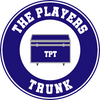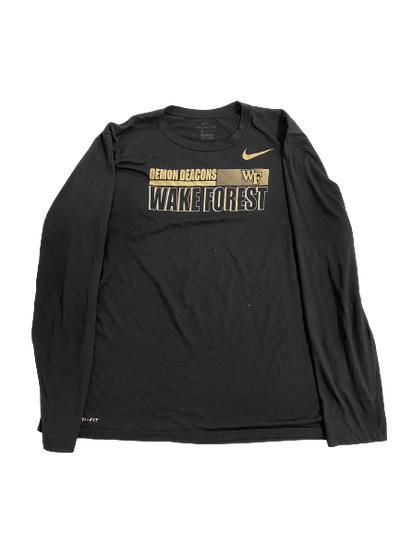YAHOO!: March Madness: The 'Chucky Special' shows how NIL will play in the Big Dance
As time expired in Wisconsin’s game against Purdue on March 1, Wisconsin-Madison guard Chucky Hepburn banked in a three-pointer to secure a share of the Big Ten title for the Badgers.
While fans rushed the court in celebration and videos of the shot spread through social media, t-shirt designers at The Players Trunk created the “Chucky Special" to highlight Hepburn’s championship-winning shot.
Within a few days, fans bought the shirt and money flowed not only to The Players Trunk — and to Hepburn, thanks to the NCAA's Name, Image, and Likeness (NIL) policies.
This year’s men’s NCAA basketball tournament, which officially started with play-in games on Tuesday, is the first March Madness event since the NCAA cleared athletes to profit off their fame.
“That's what excites us most about March Madness, knowing that there' so many more of these opportunities that are going to be coming at our doorstep,” The Players Trunk Co-Founder Hunter Pomerantz told Yahoo Finance. “It's just how we continue to be first at them, and continue to capitalize and monetize for these athletes.”
'You could see a six-figure type payday'
The NIL space has been rapidly growing since June 30, 2021, when the NCAA elected to approve an interim policy that would allow all student-athletes to profit from their NIL.
Aside from the NCAA policy, which could be made permanent or be repealed, there are currently 26 states that have passed their own NIL policies on a state level (Alabama had initially created their own NIL law, though this was later repealed on February 3, 2022).
Recent data from Opendorse, which tracks NIL trends, lists women’s and men’s college basketball as the second and third top-earning sports in the NIL space, respectively. It's not a huge boom across the board: The $561 average compensation of Division I athletes across all sports in the first year of NIL hasn’t been eye popping. There is also an emerging NIL gender pay gap.
That said, the success of the "Chunky Special" and the large audience for March Madness suggests that the Big Dance could create some high-grossing NIL opportunities for NCAA athletes.
“You could see a six-figure type payday just by having ready to go merchandise purchasable by fans across the country,” Lawrence told Yahoo Finance. “Depending on the athlete's social media audience, national advertisers might be willing to spend somewhere between $50,000 to $100,000 dollars to turn them into an ambassador over the next several months.”
Some bigger brands like Outback Steakhouse have struck a balance with NIL marketing through tiered advertising. They’ve promoted top players like Villanova’s Collin Gillespie but also appealed to lesser-known players with an opt-in feature to their advertising campaign. Those players, often from smaller schools, can agree to share Outback on their social media and receive a gift card while also gaining exposure from the restaurant chain.
“That's like a grassroots bottom up approach and then we have our halo at the top of marquee athletes that have much more relevance, larger platform, much more visibility,” Harry Poole, the Vice President of Marketing Solutions at Excel Sports Management who helped organize the deal between Outback and the NCAA athletes, told Yahoo Finance. “We really feel like we're able to hit it from both sides by having the micro-influencers at the bottom and the more traditional influencer model at the top."
Lesser-known athletes will also see more opportunities arise as their fame grows amid tournament success. Pomerantz and The Players Trunk plan to crank out shirt designs late into the night through out the next month. They want to turn shirts as fast as possible because if you’re even a few hours a late the moment “starts to fade,” per Pomerantz. Sponsored social media posts and cameos appearances are also expected to be frequent revenue generators as brands attempt to strike before the fame fades.
Now, with the attention of donors and sponsors, Lawrence believes fringe NBA players who excel in March might see more value in staying another year at the college level.
“The underlying trends of this market is that boosters and donors are very supportive of men's basketball players in certain markets and keeping an athlete in a certain market may be quite valuable to that team and to the people that support the team,” he said.
Josh is a producer for Yahoo Finance.





